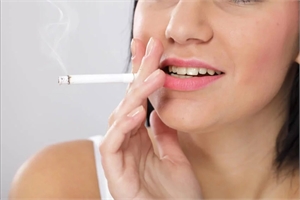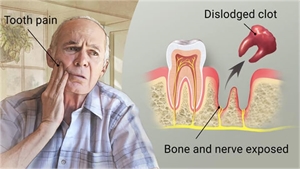Tooth extraction is an invasive procedure. It involves removing the entire tooth which is most likely to be infected. Tooth removal involves removing the entire tooth including its roots. At the end of the extraction, the dentist ensures that there are no remnants or fragments of the tooth that are left in the socket.
During the removal of the tooth, the rupture of the blood vessels surrounding it results in the filling of the tooth socket with blood. It takes nearly 7 to 10 days for this blood to clot and ultimately heal. Soon after a new bone is laid underneath.
It is important to note that the habit of smoking can lead to an increase in the level of carbon monoxide in the blood. This is a significant piece of information as it has a direct effect on the healing process that follows tooth removal. Smoking leads to an increase in the blood pressure which further delays the healing mechanism. Moreover, the heat generated from smoking does not let the clot to thrive which completely complicates the closing of the socket. It causes a decrease in the oxygen content and all the nutrients that are necessary for the clot to form.
When smoking comes in the way of the clotting of the blood after tooth removal, delay of the wound closure is not the only thing that is affected. This delay is more often accompanied by uncomfortable sensations and throbbing pain. As mentioned before, extraction of the tooth leads to the pooling of the blood in the socket. This is actually a defense mechanism as certain constituents of the blood protect the exposed nerves that are present in the socket. Smoking causes the pooled blood and later the forming clot to dry up at rapid rates. This leads to the nerves being completely open for painful stimuli. The condition is called dry socket and it is even more painful than the root cause for which you got the tooth removed for.
A dry socket is not only painful but can also make mouth opening difficult. It can be a nidus for foul breath coming from the mouth. Besides, a dry socket caused due to smoking can be even more painful since the toxins present in the tobacco can adversely damage the gums, the ligament holding the tooth and eventually lead to inflammation. Since a dry socket is vulnerable to infectious microbes, the region of the extracted tooth in the jaw bone might develop an abscess. An abscess can manifest as a swelling and cause severe pain as it invades the tissues.
Smoking after the removal of the tooth is absolutely prohibited at least for the next 72 hours. People addicted to smoking can resort to nicotine patches if at all they find it difficult to control their urge. If at all people do smoke after tooth removal, they can later hold warm saline water in their mouth for a few minutes. However, this method won't make much difference. Hence, it is better to completely keep away from smoking.
The more time smokers give their oral cavity in the healing process, the faster will the clot develop and heal. The safest way to resume smoking is by looking in the mirror and seeing if the gingiva has started to heal. This will also give an idea on how much the socket has closed. In fact, a better way to utilize this period can be by making it a starting point to quit smoking altogether. Considering from a dental health point of view, smoking is what can be the reason for the extraction of the tooth. This is because the inflammation of the tooth's surrounding tissues can lead to the regression of those tissues, making the tooth movable and prone to infections.
Thus, when it comes to smoking after tooth extractions, one can either patiently wait for 3 to 10 days before resuming or consider the wait as a blessing in disguise and give up on the injurious habit of smoking. We at Dr.Jha's Dental do not recommend smoking as its adverse effects are not only restricted to the oral cavity but also the vital organ systems.



